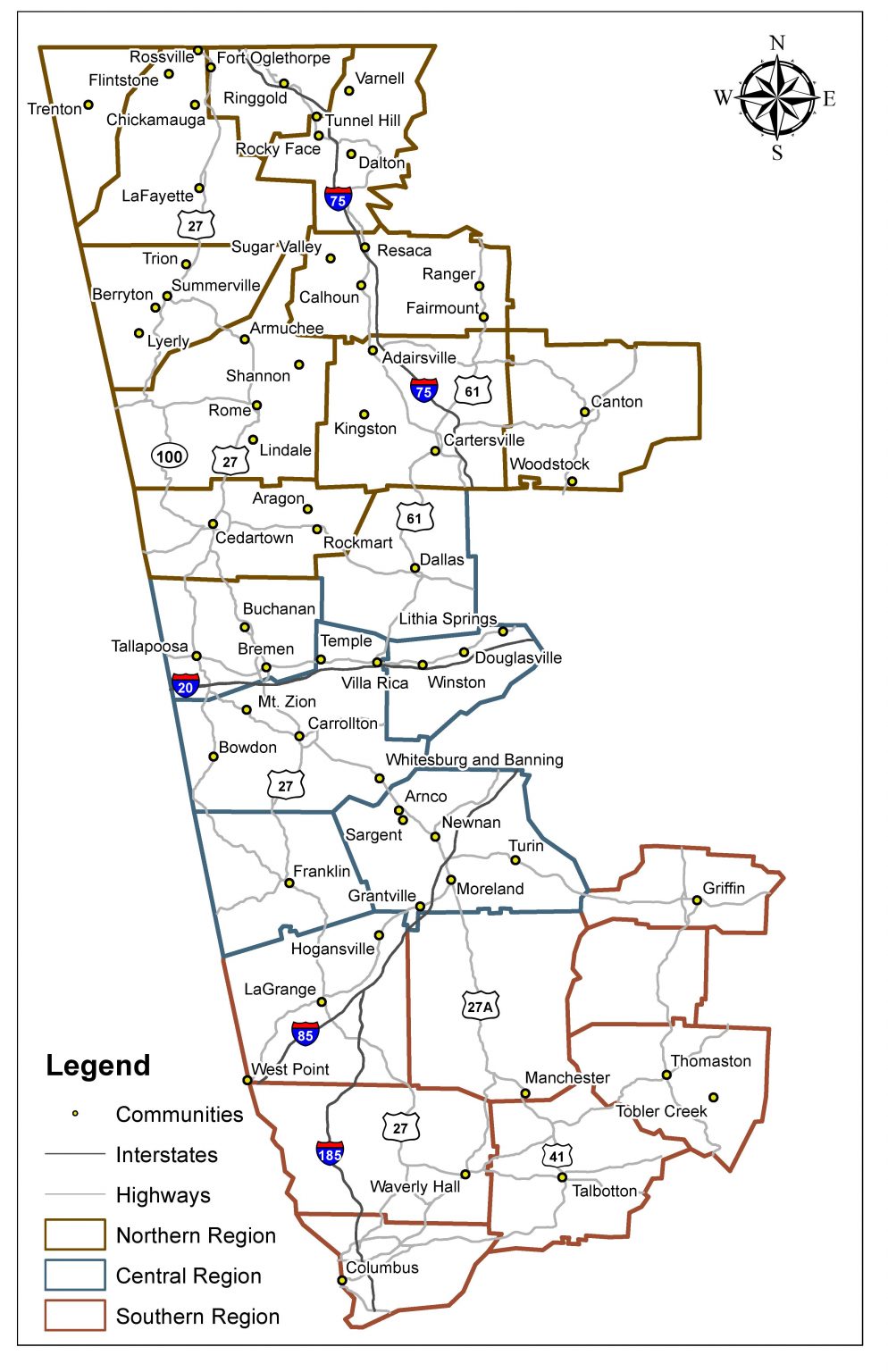Visit the community pages below to find out what you can see in each town!
Many of the early mills in this area focused on more traditional products such as cotton duck, yarns, sheeting, and osnaburgs. Certain mills, such as those at Canton and Lindale, came to focus on exploiting the demand for denim. Meanwhile Rossville, due to its status as a suburb of Chattanooga, was tied more to the textile industry of Tennessee than Georgia. It was the seat of a knitting empire that at one point stretched across Tennessee, while it was also home to one of the largest woolen mills in the South. From the 1900s on, a cottage industry producing chenille bedspreads began to take shape as families sold their wares to tourists in “spread lines” along major thoroughfares. By the 1930s, the popularity of chenille products led to the commercialization of the industry, with Dalton and Calhoun at the epicenter of a booming new business. As the popularity of chenille faded in the 1950s, many bedspread manufacturers converted to carpet and rug production. While the majority of the traditional mills in the area eventually fell by the wayside, the carpet and flooring industry here is still a pillar of the region’s economy. One historic mill at Trion is still in operation as well, while mills at Dalton, Rome, Canton, Cedartown, and Rossville have been repurposed and preserved. The ruins of the Old Rope Mill near Woodstock can also be explored, they are now part of a city park that is open to the public.

The textile boom at the turn of the twentieth century brought large brick mills to many of the railroad towns by 1910. Several major northern companies established some of the largest cotton mills here, including the Massachusetts Mill of Georgia in Lindale and Aragon Mills. Hosiery mills appeared by 1900, with several in this region by the time famed photojournalist Lewis Hine visited in 1913. The first knitting mills produced socks, but some of the 1920s companies had begun to produce underwear. Several cotton mills produced yarns for hosiery. Both the cotton and hosiery mills in this region constructed mill villages.
In the 1920s, national companies began to invest in the northwest Georgia region. Goodyear purchased cotton mills in Cedartown and Cartersville and built a new plant in Rockmart to produce tire cords and fabric. American Chatillon Corporation, an Italian-American business, established a new operation in Rome to produce rayon, a popular synthetic fiber. These late 1920s companies continued to build mill villages and embraced the spirit of corporate paternalism. The Northwest Georgia Textile League supported baseball teams for many of these larger mills.
The commercial chenille industry started here as part of the Appalachian crafts revival when Catherine Evans Whitener sold her first tufted spread in 1900. Hand-tufted chenille quickly grew from a small handicraft business to a regional enterprise. By the 1930s, clotheslines filled with hand-tufted products lined “Bedspread Boulevard” along U.S. Highway 41. Tourists traveling to and from Florida along this stretch of the Dixie Highway stopped to purchase the popular chenille. By the 1930s, the process moved into factories and utilized machines, but chenille remained popular through the 1960s.
Carpet production evolved out of chenille technologies and grew dramatically in this region from the 1950s onward. By the 1970s, the majority of the carpet companies in the United States were located around Dalton. Now, three of the four leading carpet companies in the country are based in Dalton: Shaw, Mohawk, and Beaulieu.
Communities:
- Adairsville
- Aragon
- Berryton
- Calhoun
- Canton
- Cartersville
- Cedartown
- Chickamauga
- Dalton
- LaFayette
- Lindale
- Ringgold
- Rockmart
- Rome
- Rossville
- Shannon
- Summerville
- Trion
Northern Region | Central Region | Southern Region
Back to Explore
Email the Trail at wgtht@westga.edu or visit our Contact Us page for more information.

